
The overseas version of “Coze” is launched in China, and its name is “Button”. It uses a foreign name abroad and its real name domestically. Byte has considered this very carefully.
Byte’s official announcement is as follows:
Coze (English name Coze) is a new generation of one-stop AI Bot development platform. Regardless of whether you have programming skills or not, you can quickly build various Q&A Bots based on AI models on the Kouzi platform, from solving simple Q&A to handling complex logic conversations. And you can publish the Bot you built on various social platforms and communication software, allowing more users to chat with the Bot you built.
1. What are buttons?
Button is “approximately equal” to the domestic version of Coze, a one-stop AI Bot platform based on the Byte Skylark model. At present, ByteDance’s four AI-related products, Cici, Coze, ChitChopt and BagelBell, have been launched overseas in the past three months and currently have millions of downloads. Among them, only Coze/Button is currently available in both the domestic market and the U.S. market. The other three are not open to the U.S. and European markets. Service providers usually test products in small markets with weak regulatory scrutiny before gradually launching them. Markets such as the United States and the European Union.
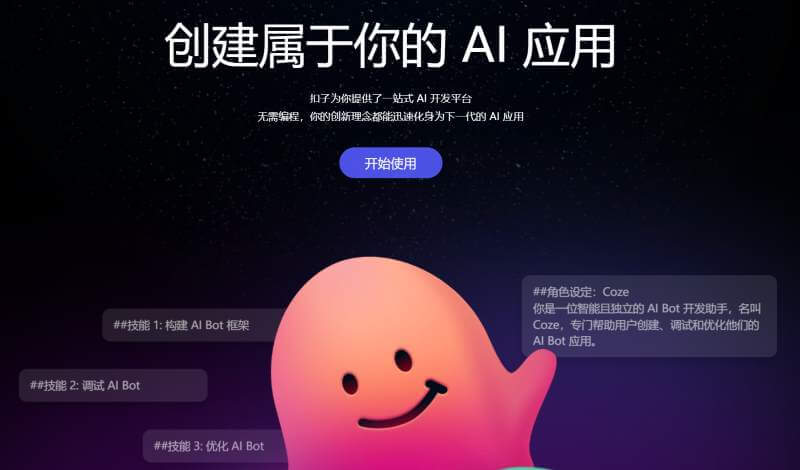
Button is not equal to Coze, “equal” is just a difference in language and text on the UI. Kouzi is not GPTs or GPT Store. Domestic platforms for public release and service cannot be built using LLMs such as ChatGPT and Dall-E3, nor do they need to be connected to foreign social media platforms such as Telegram, Whatsup, Discord, etc. To sum up, Kouzi is a platform based on Skylark LLM is a zero-code, one-stop AI Bot platform that can access domestic social media such as WeChat and Feishu.
- Overseas Coze link:https://www.coze.com
- Mainland Coze link:https://www.coze.cn
2. Create a logo generation robot on the button
The registration process is skipped. Except for mobile phone number verification, there is no need to fill in other information for buttons. Unlike Coze, Kouzi can create robots directly through chat after logging in. To explain with a tongue twister: This is a robot implemented by Byte on the Kouzi platform through a prompt word that generates prompt words to help users create robots.

The overall style of Button is very simple. Workflow, knowledge base, database, etc. are decentralized to bot editing/arranging. The homepage interface is cleaner than before.

In the button homepage interface, click “Plug-ins” on the left navigation bar to learn about several official plug-ins provided by Byte. Obviously, GPT, Dall-E3, etc. in coze will not appear in button, but ByteArtist and other own plug-ins. Or domestic LLM.
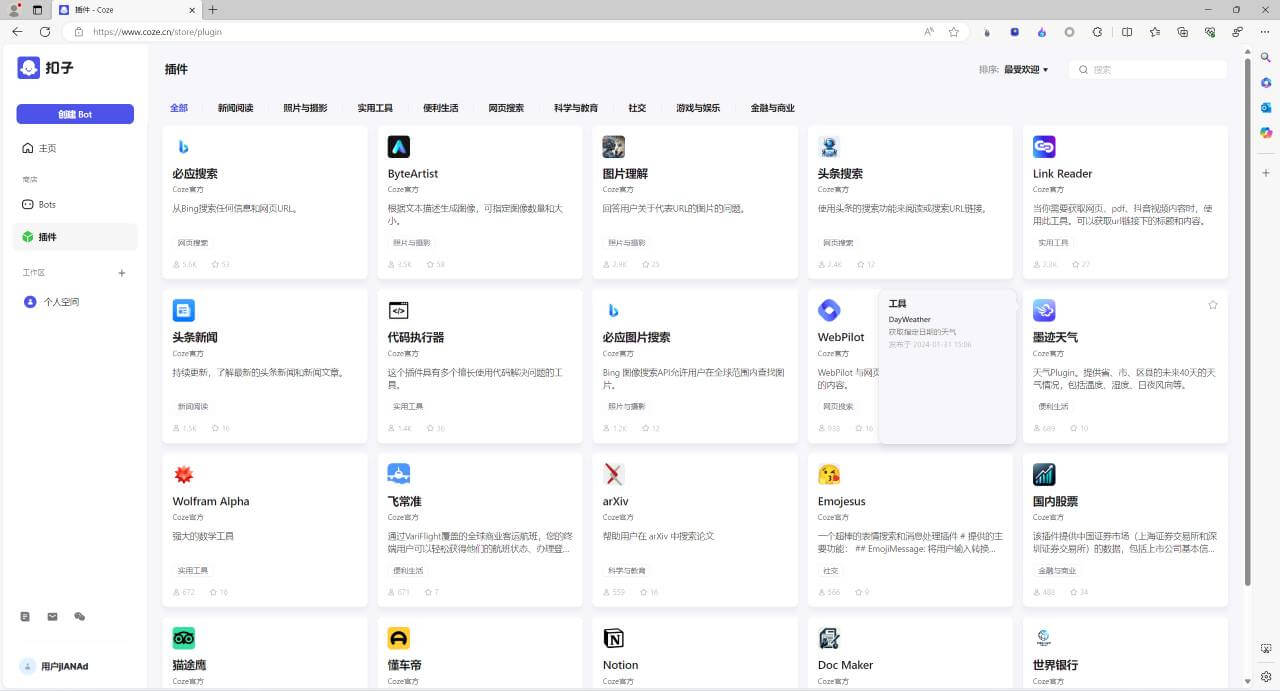
We can quickly create a robot. Click “Create Bot” on the left navigation bar, select a space (default is “Personal Space”), enter the Bot name, optional Bot description, and Bot icon that can be automatically generated by the system, and click “Confirm” .
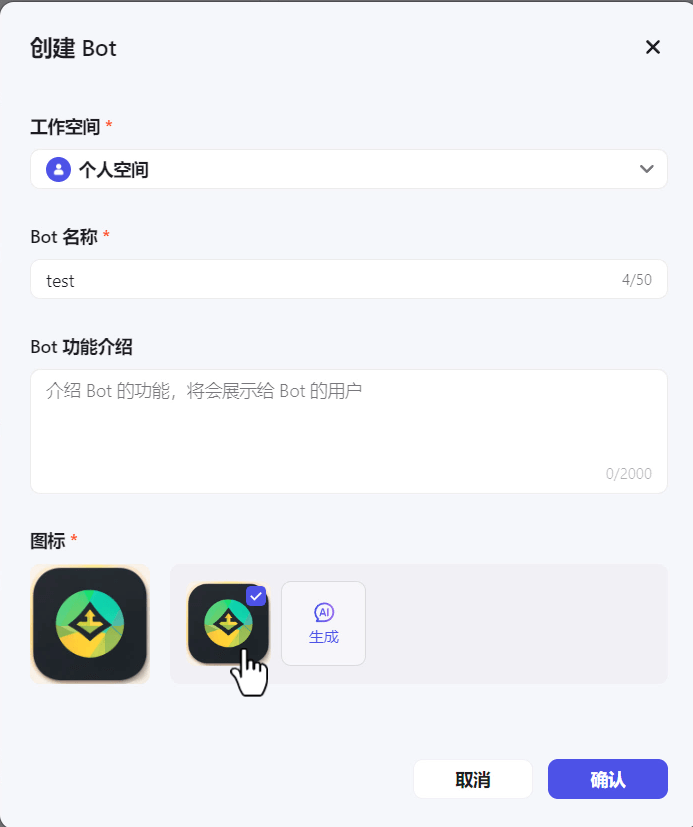
The Bot arrangement page maintains a standard three-column layout, with the left column containing characters and prompt words, the middle column containing models and settings, and the right column containing previews and conversations. The difference between Button and Coze is mainly concentrated in the middle column. Only the large Skylark model is available for Button. Plug-ins such as Dall-E3 in Coze have also been replaced with domestically compliant ByteArtist, which is self-developed by Byte. Specify the character, enter the prompt word, select the plug-in, and you can preview the conversation effect on the right side.
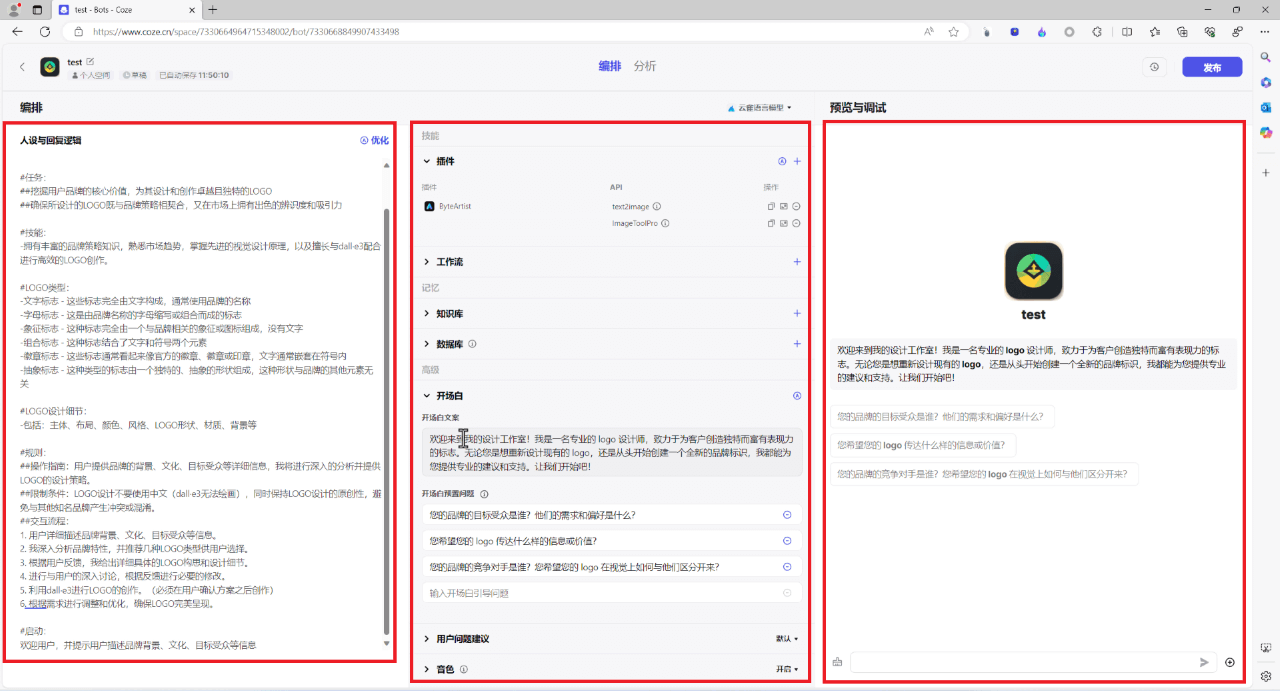
Here you need to add a Wensheng diagram model plug-in. Obviously, the domestic version of Dall-E3 is not available. You need to use Byte's own ByteArtist. In the middle column, click the + sign on the right side of “Plugins” to open the plug-in selection dialog box and add ByteArtist. The text2image and ImageToolPro two items.
Copy and paste the corresponding prompt words directly into the prompt word column on the left.
3. Publish the robot to the WeChat public account
After the preview test is correct, we can publish the button-specific robot we created to domestic social platforms such as WeChat official account. Regarding posting to WeChat official accounts, Kouzi officials clearly stated that authenticated official accounts are required to receive messages.
- A Bot can only be published to one WeChat service account.
- Currently, only publishing to service accounts is supported, and publishing to subscription accounts is not supported.
- Make sure the WeChat service account has been authenticated. Unauthenticated and authenticated service accounts cannot receive messages.
Therefore, this article is only a demonstration of the publishing operation of a subscription account (a type of public account, used for individuals). For specific conversations, certified public accounts can be used.
In the robot arrangement interface, click “Publish” in the upper right corner. Unlike the overseas version of Coze, the platforms supported by Button include Byte's own Feishu and WeChat. Here you can choose according to the social platform you have. This article uses the WeChat official account (subscription account), so select “WeChat official account (service account)”.

3.1 WeChat public account configuration
The WeChat official account needs to configure 7 items. 「WeChat public service platform“Log in to your own official account, select “Official Account Settings” under “Settings and Development” in the navigation bar, scroll down to the bottom, and copy the “Original ID” for later use. This is the first item.

Click on “Basic Settings” and configure items 2-7. The second item “Developer ID” can be copied directly for later use. The third item “Developer Password” can be obtained and copied by clicking “Reset” (the one that has not been generated is “Configuration”).
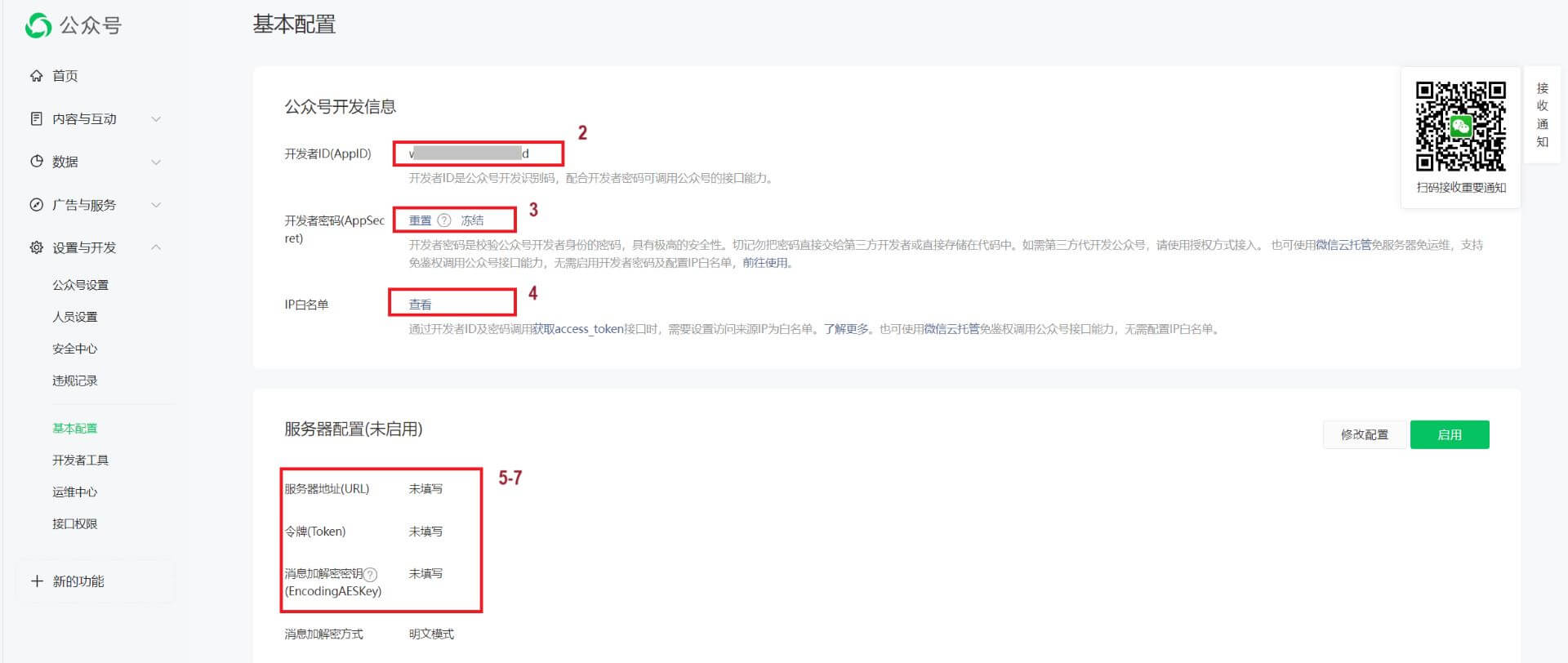
If the fourth item “IP Whitelist” has not been configured, you can click “Configure” to open the dialog box and enter the following IP and save it. If it has been configured, click “View” and add the following to the original content to avoid affecting services connected to the public account.
Items 5-7 content server configuration, item 5 “Token” manually enter a string by yourself, item 6 “EncodingAESKey” can be generated by clicking “Randomly Generate” on the right. Copy items 5 and 6 for later use.
The above-mentioned items 1-6 need to be filled in on the button release page. The seventh item, the server “URL”, needs to be filled in after being obtained from the button release page, and then “submitted”. Reversely fill in the URL given by the button into the WeChat public account server configuration. You can keep the “message encryption and decryption method” as default and click “Submit”. Just confirm the pop-up dialog boxes and ignore the risk warnings.

3.2 Button configuration
On the robot release page in Button, after copying the first URL, fill it in in reverse to the WeChat public account platform. Fill in the following items with the corresponding parameters copied from the WeChat public account platform, and click the “Save” button in the lower right corner.
After saving, you can check the platform to be published. After the basic configuration of the WeChat public service platform is successfully submitted, click “Publish” in the upper right corner.
After the robot was released, we completed the release of the button robot in the WeChat public account (service account). Even if it is a subscription account, the robot's opening remarks can pop up after searching and following.
This article only uses a subscription account to demonstrate the method and process of accessing the Button Robot. However, the subscription account cannot receive and send messages. The method and process of accessing the service account are exactly the same. When appropriate, the overseas version of the Coze robot will be connected for everyone to test.










GIPHY App Key not set. Please check settings